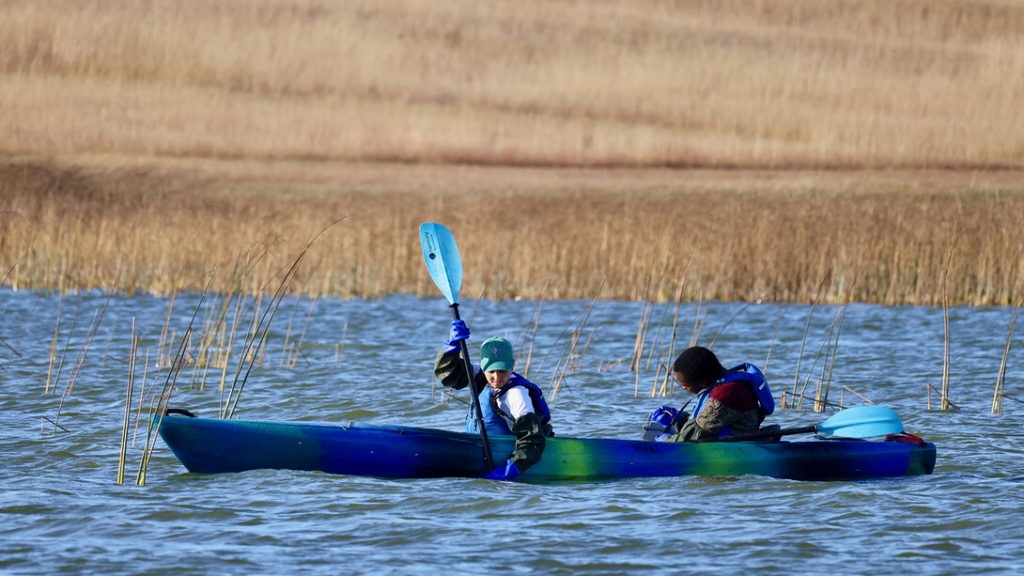Natalie Jones, June 4, 2025
Nebraska-led NSF project sheds light on microscopic life in Sandhills
In Nebraska’s Sandhills, a unique collaboration among scientists, students and ranchers is underway to study nematodes — microscopic worms that play a vital role in soil and ecosystem health.
Backed by funding from the National Science Foundation’s Poorly Sampled and Unknown Taxa (PurSUiT) program, the University of Nebraska–Lincoln is leading the three-year, multi-institutional project with the University of Florida. The PurSUit project goal is to better understand the biodiversity of nematodes in Nebraska’s alkaline lakes — ecosystems considered among the most fragile and distinct in the United States.
The work is led by Thomas Powers, a nematologist in the University of Nebraska–Lincoln’s Department of Plant Pathology, in partnership with Dorota Porazinska, an associate professor at the University of Florida. Their teams are studying how these microscopic organisms — critical to sediment health — survive in extreme environments and what that can reveal about long-term ecosystem sustainability.
“The Sandhills are an ecological treasure, and the nematodes found here are incredibly resilient,” Powers said. “By understanding their adaptations, we gain insight into how ecosystems respond to environmental stressors like drought, salinity and climate change.”
The research centers on Nebraska’s high-pH, alkaline lakes, which are fed by the Ogallala Aquifer and surrounded by working rangelands. Researchers are collecting samples — often by kayak — from remote lakes on private ranchlands, including the Wilson Flying Diamond Ranch and the Benjamin Ranch. Landowners are playing a key role by supporting access and conservation.
“Ranchers are important partners in this work,” Porazinska said. “They help us connect ecological data with the realities of land management.”
In addition to scientific discovery, the PurSUiT project incorporates public engagement and science communication. Faculty, undergraduate and graduate students at both institutions are documenting the work through photo essays, podcasts and a future mini-documentary. Faculty at Florida are also working with the Platte Basin Timelapse project to visually capture the Sandhills landscape.
The project’s first public-facing product, a photo essay, introduces audiences to the early stages of the fieldwork and the experience of tracking microscopic life across Nebraska’s windswept lakes.
These storytelling efforts are hosted on Streaming Science, a digital platform for student-created agricultural and environmental stories.
“This project helps demystify the scientific process,” said Jamie Loizzo, an associate professor of agricultural and natural resources communication at Florida and one of the project’s social scientists. “By showing the challenges and discoveries along the way, we invite people to follow the science, not just see the final result.”

Doctoral students David Sirengo of Nebraska and Ricky Critchfield of Florida are deeply involved in fieldwork and sample analysis, gaining hands-on research experience that bridges institutions and disciplines.
“The Sandhills are both beautiful and demanding,” Sirengo said. “Fieldwork here can be tough — but the chance to contribute to a deeper understanding of these unique ecosystems is incredibly rewarding.”
The project runs through 2027, with more multimedia content planned. The goal is to bring audiences behind the scenes of scientific work and to engage educators, producers, Extension audiences and the general public in conversations about soil and sediment health, sustainability and the scientific process.
“We hope this sparks curiosity — not only about nematodes but about how we do science and why it matters,” Powers said.





